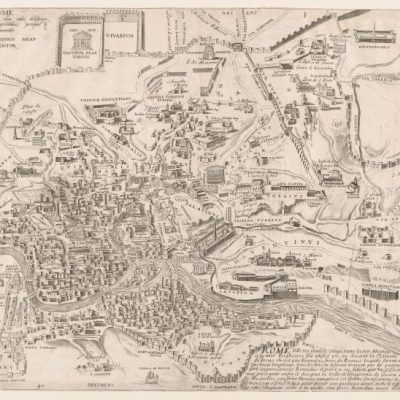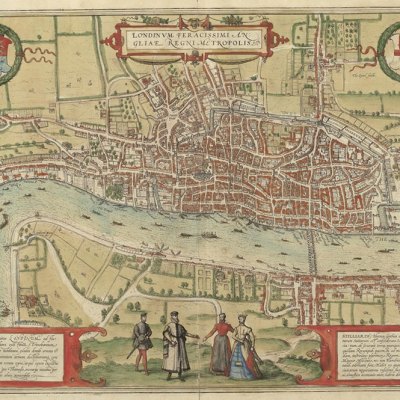The name Septimius Severus is not, perhaps, as well known as those of some of his fellow emperors. A successful military career meant that he could rely on a few triumphal arches dotted around the empire (which by some measures reached its greatest extent under his rule, at the turn of the third century AD); the Septizonium, a free-standing structure of uncertain function between the Palatine Hill and the Appian Way, must have been quite a sight before Pope Sixtus V broke it up for parts in the late 16th century.
But his personal qualities – even the name suggests a certain asperity – did not endear him to contemporaries in the Roman political and military elites, whom he was fond of executing; nor to his son Caracalla, impatient to wear the laurels, who, it is said, made as if to stab Septimius in the back while they were campaigning in drizzly Caledonia together. Jean-Baptiste Greuze – most famous for his genre paintings – depicted the subsequent fatherly telling-off in a canvas of 1769.
One peculiar achievement of Septimius’s reign was the Forma Urbis Romae, an engraved stone map of the city at the time of the emperor’s death. It covered a whole wall in the Temple of Peace, which had been endowed by Vespasian in 75 AD and filled, in one of those low-key ironical gestures at which the Romans excelled, with spoils from the Temple of Jerusalem, recently ransacked by the emperor’s forces. The map itself seems, given how sparsely annotated it was and how hard the upper portions must have been to see, to have served no purpose beyond sheer civic pride.
The sections of the Forma Urbis and the Nolli map showing Tiber Island in Rome. Photo: © Sovrintendenza Capitolina ai Beni Culturali
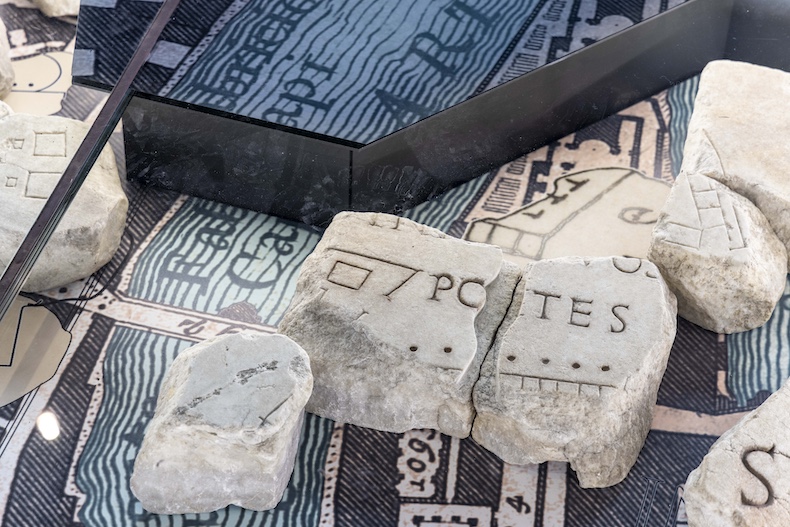
Around a tenth of the map survives, in nearly 2,000 chunks of varying sizes. Fragments have been found and documented (somewhat haphazardly – several pieces were subsequently lost again) since the mid 16th century, when antiquarian passions were running high and a burgeoning print culture enabled artists and cartographers to study, imagine and render the city as it was then, and as it had once been. Some fragments are immediately recognisable from surviving or well-remembered monuments and topographies, such as the theatres of Pompey and Marcellus, the boat-like Tiber Island and the Septizonium. Some helpfully retain a few letters from their original annotations. But many consist of just a couple of lines and dots, and are unlikely ever to be slotted back into the jigsaw.
Endlessly debated and terminally, maddeningly incomplete, the Forma Urbis has been resistant to interpretation and display. Piranesi, the great poetic antiquarian of the later 18th century, incorporated bits of it into his etchings of the Campus Martius. But he was sceptical about its reliability and tended to stress its fragmentary nature, seeing it as a tragic albeit conveniently picturesque bricolage, a counterpoint to his own (well researched, yet often outlandish) visions of ancient Rome. Pieces of the map were on view in the garden of the Palazzo dei Conservatori on the Capitoline Hill in the early 20th century; it was subsequently kept, mostly in storage, at the Museo della Civiltà Romana, in the EUR district in the southern part of the city. An exciting online project at Stanford promises an all-singing, all-dancing catalogue, fully digitised and 3D-rendered. But the thing itself has been hard for visitors to see.
A plan of Rome showing fragments of the Forma Urbis, drawn by Giovanni Battista Piranesi and published in Le Antichità Romane (‘Roman Antiquities’) in c. 1756. Metropolitan Museum of Art, New York
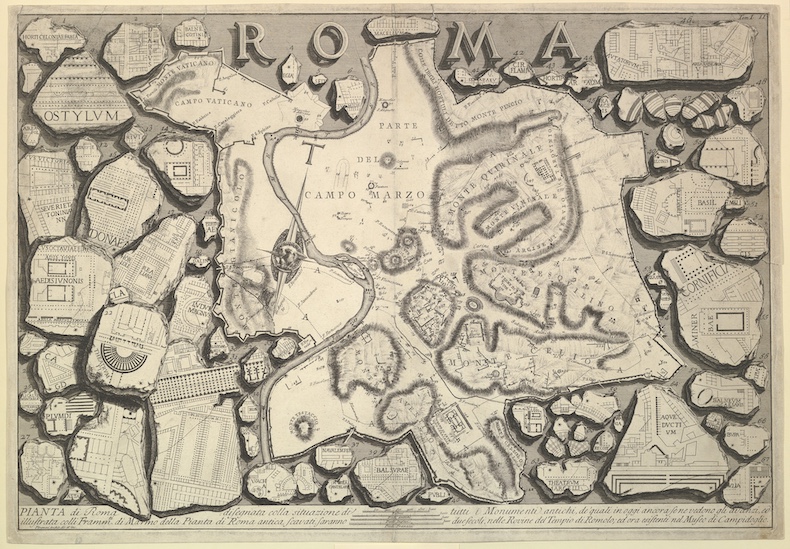
Now, though, a short walk from the site of the Septizonium, in a new archaeological park on the Caelian Hill, a converted gym once used by a Fascist youth group displays the map in an ingenious and imaginative way. Identified pieces, and images of pieces that were identified and documented but have since been lost, are set into shallow recesses in the floor, which is overlaid by a gigantic reproduction of Giambattista Nolli’s own map of the city, the Nuova pianta di Roma, which he completed in 1748. The whole thing is covered with tough and, one hopes, scratch-resistant glass. Visitors walk around on top of a palimpsest of the 3rd and 18th centuries. Lucid information panels, together with a few fragments of the Forma Urbis which have not been identified, line the walls. The whole arrangement is modular, so new discoveries or insights will allow these pieces, and any that should come to light in future, to find their place on the floor.
The experience of the Museo della Forma Urbis is immersive and even emotional – more like a contemporary art installation than a conventional archaeological museum. The two layers are easy to relate to one another, but they’re not allowed to merge, thanks to clever lighting and a bluish background tint in some areas. The crisp, minimal style of the Forma Urbis contrasts with the more eloquent but somehow blowsier engraved forms of Nolli’s map (which sets the spatial elaborations of baroque Rome in dialogue with the more laconic forms of the ancient city – the keyhole-shaped piazza in front of St Peter’s and the ellipse of the Colosseum, the curlicues of the Ripetta and the sturdy circle of Augustus’s mausoleum). Some of the largest surviving sections depict sites that have disappeared in reality (notably the Temple of Peace, bulldozed by Mussolini to make way for what is now called the via dei Fori Imperiali – though the wall to which the map was once attached survives as part of a church; the marks left by the map there have been an invaluable resource for scholars).
Interior of the Museo della Forma Urbis. © Sovrintendenza Capitolina ai Beni Culturali
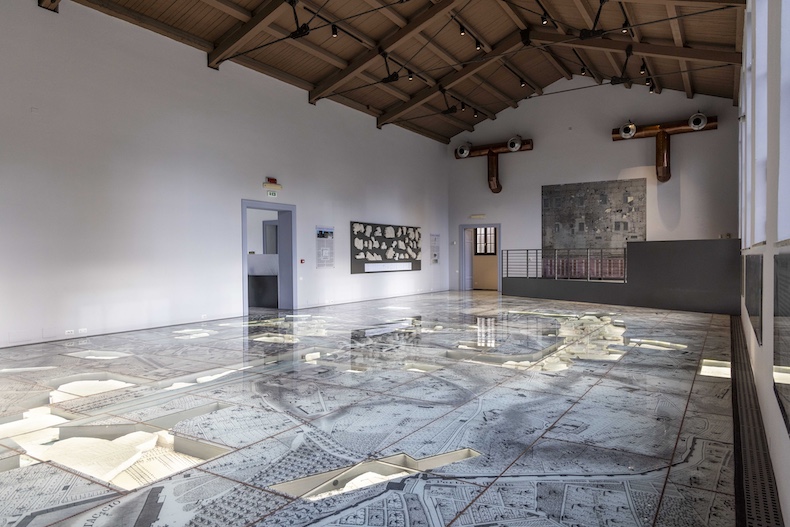
The Forma Urbis may not have approached the paradoxical perfection of the map in Jorge Luis Borges’s story Del rigor en la ciencia (‘On Rigor in Science’), which precisely matches the territory it describes in detail and extent – though it was pretty big, at 18 by 13 metres. But like Borges’s map, and like Rome itself, it was abandoned to the elements by the descendants of those who created it. Roma quanta fuit, ipsa ruina docet, the antiquarians of the Renaissance were fond of saying: its very ruins teach you how great Rome was. The curators of the new museum understood that a ‘pure’ presentation of the Forma Urbis wasn’t just impossible, but undesirable, since we always experience Rome through a prism of antiquarianism. Echoes of the past ring out in the present. Nothing lasts for ever, but nothing ever really disappears; it’s all down there waiting, under the surface.

